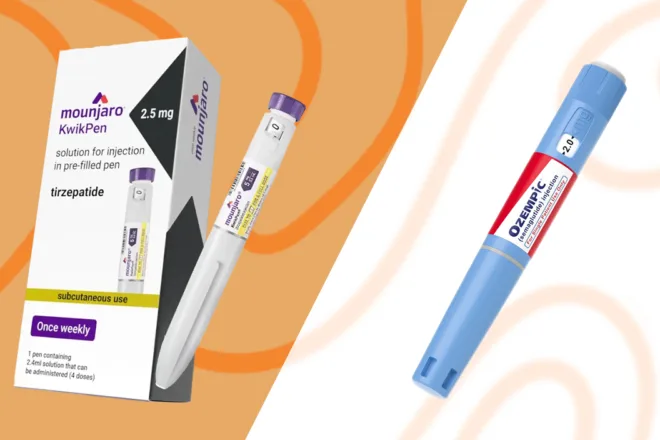Mounjaro vs. Ozempic: Which One Is Better for Weight Loss and Diabetes Management?
Both Mounjaro and Ozempic are injectable medications for type 2 diabetes, but they work differently:
- Mounjaro targets both GLP-1 and GIP receptors, potentially leading to greater weight loss.
- Ozempic focuses on the GLP-1 receptor and is also approved for reducing heart risks.
- Both help with blood sugar control and appetite suppression but come with side effects like nausea and stomach discomfort.
- Mounjaro offers higher dosing options, while Ozempic provides more flexibility in increments.
Choosing between Mounjaro vs. Ozempic depends on weight loss goals, health conditions, and medical advice. Consult your doctor to determine the best option for you.
When it comes to managing type 2 diabetes, Mounjaro (terzepatide) and Ozempic (semaglutide) have become key medications, but they work in different ways. Besides, using Mounjaro for weight loss purposes is also growing rapidly. It’s important to know how each one functions so you can make informed decisions about your health.
Mounjaro vs. Ozempic: How They Work
Mounjaro is a bit of a multitasker. It acts on two receptors—GLP-1 and GIP—helping to regulate hormones that play a role in controlling your metabolism and suppressing appetite. Ozempic, on the other hand, mainly focuses on the GLP-1 receptor, helping with blood sugar control in a slightly different way while also aiding in appetite suppression. Both are effective, but their approaches vary.

Mounjaro and Ozempic: Which is Better for Weight Loss?
Clinical studies show that Mounjaro can lead to greater weight loss compared to Ozempic. While individual results vary, Mounjaro may be a more effective option for weight loss alongside diabetes management, but it’s essential to consult a healthcare provider for personalized advice.
FDA Approval and Use
Ozempic is approved for managing blood sugar and can also reduce heart risks in people with heart disease, while Mounjaro is FDA-approved for managing type 2 diabetes with its dual action on receptors.

Side Effects Comparison
Both medications can cause nausea, vomiting, diarrhea, and stomach discomfort, especially when starting. In rare cases, they may increase the risk of pancreatitis, so regular monitoring is important to minimize Ozempic and Mounjaro side effects.
How They’re Taken
Both Mounjaro and Ozempic are weekly injections with pre-filled pens for easy use. Ozempic offers doses from 0.25 mg to 2.0 mg, while Mounjaro pens are single-use and range from 2.5 mg to 15 mg, depending on your prescription. Find practical tips about how to use Mounjaro pens and the full guide to Mounjaro dosing in our blog.
Mounjaro vs. Ozempic: Conclusion
Choosing between Mounjaro and Ozempic depends on your specific needs, like weight loss goals, overall health, and any other conditions you may have. Talking to your doctor is key in finding the right medication for you, so you can get the best results in managing type 2 diabetes.
At elegant hoopoe, our healthcare providers will help you in your weight loss journey. You can choose among our different solutions, including Mounjaro+TruBody if it’s right for you.
Sources
Mounjaro Official Website : What is Mounjaro?
Ozempic Official Website : What is Ozempic
Diabetes :Oral & Injectable Medications for Type 2 Diabetes
mayoclinic :Diabetes drugs and weight loss
Cleveland Clinic :How Mounjaro Is Helping People With Obesity Lose Weight






